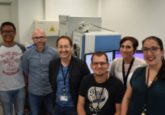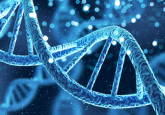Gotcha! Whole-genome sequencing discovers seven unidentified bacteria of clinical relevance

Whole-genome sequencing analysis of 61 unidentified microorganisms taken from hospital patient blood and tissue samples has identified 35 new bacterial strains, some of which can cause infection.
An ongoing research project at the University of Basel (Switzerland) has identified more than 30 new strains of bacteria, collected from patients at the University Hospital Basel, using a whole-genome sequencing approach. These newly identified species include clinically relevant strains that could prove useful in treating patients with currently unidentified infections.
In a hospital, it is not unusual to come across infections for which the cause is unknown or the causative microorganisms cannot be identified by available assays. Unfortunately, treating infections resulting from unidentified pathogens can be challenging and complex.
To address this issue, Daniel Goldenberger and his team have collected blood and tissue samples from patients with various conditions since 2014. From the samples, the team analyzed 61 strains. Standard diagnostics techniques, such as MALDI-TOF mass spectrometry and 16s rRNA sequencing, could not distinguish between the species, leading the researchers to use a different method for identification.
The team deployed whole-genome sequencing with either the MiSeq or NextSeq500 Illumina sequencing technologies. Analysis of the resulting genome assemblies was conducted using the Type Strain Genome Service, a publicly available bioinformatics infrastructure for microorganism research, and Ribosomal Multilocus Sequence Typing, an index of the variation in the 53 genes that code for each of the ribosome protein subunits.
 Revealing the secrets of the parasitic bacterial life cycle
Revealing the secrets of the parasitic bacterial life cycle
Researchers use genetic manipulation to obtain new mechanistic insights into the epibiotic life cycle.
This approach identified 35 novel bacterial strains, while the remaining 26 strains were marked as “hard to identify” due to the scarcity of information available for them or the recency with which information such as their genome sequence had been added to the databases. Seven of the newly discovered strains were capable of causing infections and were classed as clinically relevant.
Bacteria from the gram-positive genera Corynebacterium and Schaalia were the most commonly identified in the group of 35 unknown bacteria. Commenting on this finding, Goldenberger revealed that “many species in these two genera are found in the natural human skin microbiome and the mucosa. This is why they are frequently underestimated, and research into them is sparse.” However, when the skin is disrupted, for instance by a tumor, and these strains enter the bloodstream, it is known that they can lead to infection.
The researchers also marked one of the hard-to-identify pathogens as being of particular interest. From a sample taken from a patient with an infection at the site of a dog bite, the bacterial strain had recently been found in other wounds from dog and cat bites, marking it as “an emerging pathogen which we need to monitor,” according to Goldenberger.
Next, the team is working to name each of these species with the help of classification experts, and they are continuing to systematically collect and sequence pathogens from unknown infections found at the hospital, with the ultimate aim of making it easier for clinicians to detect and treat infections worldwide.





